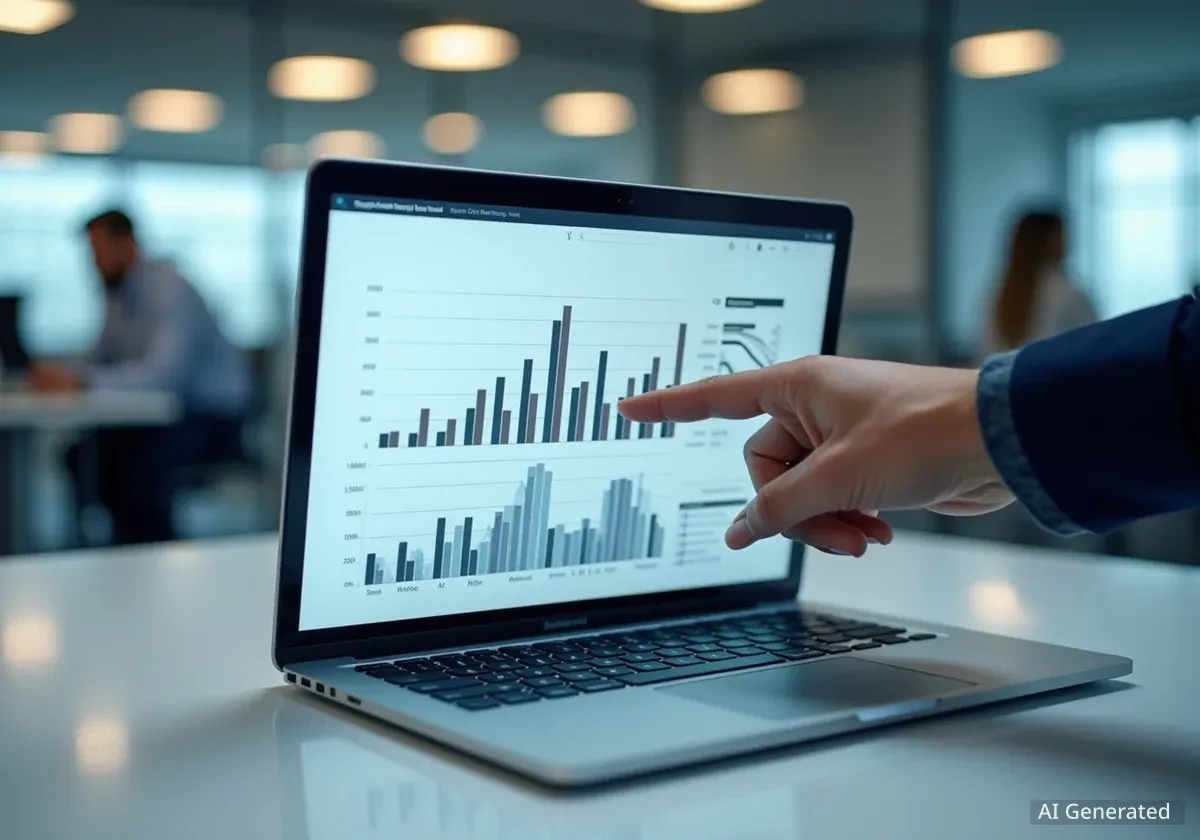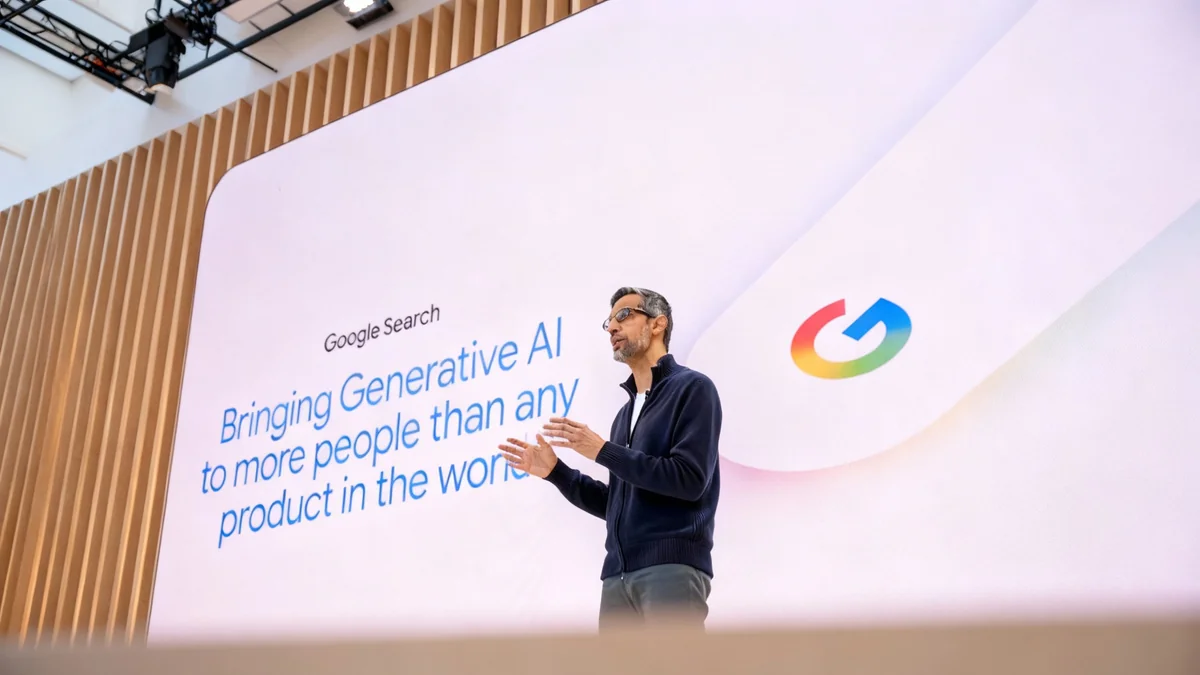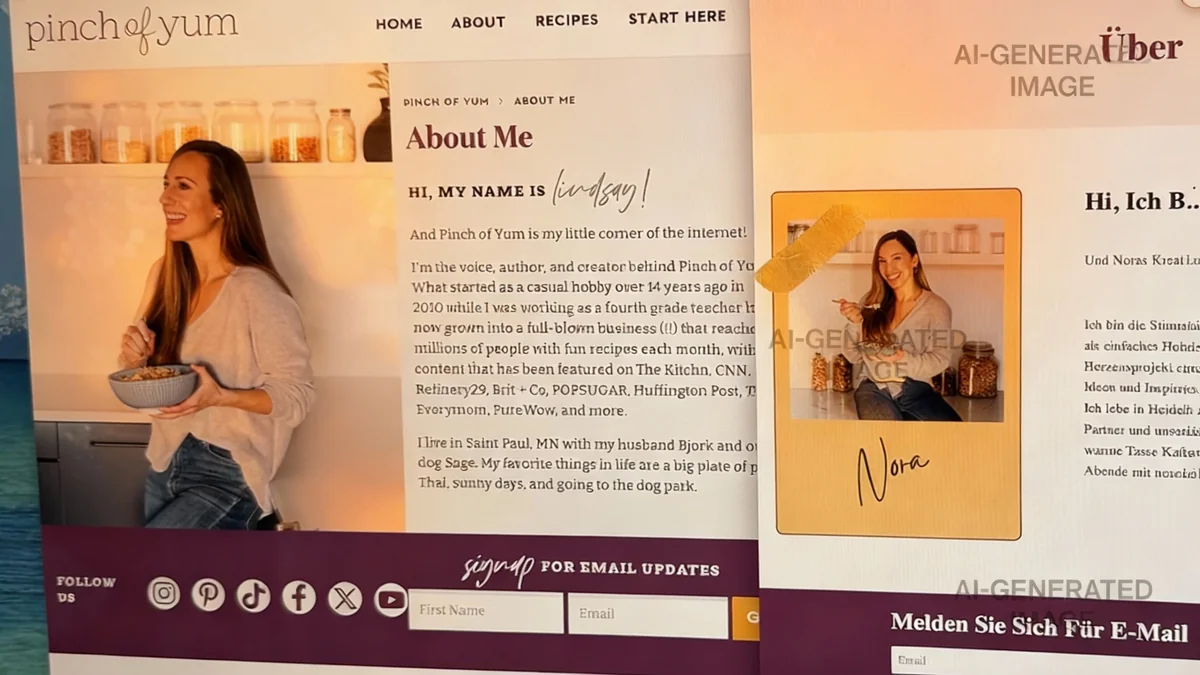A new study reveals that 54% of the websites cited in Google's AI Overviews also appear in the top organic search results. Research from BrightEdge indicates this overlap has grown significantly since the feature's launch and varies widely across different industries, with e-commerce showing the least convergence.
The data highlights a dynamic relationship between AI-generated summaries and traditional search rankings. While more than half of AI citations are sourced from top-ranking pages, nearly half (46%) come from sources not prominently featured in organic results, suggesting a shift in how Google surfaces information.
Key Takeaways
- 54% Overlap: On average, 54% of citations in Google's AI Overviews match pages in the top organic search results.
- Significant Growth: The overlap has increased by 22 percentage points over 16 months, up from an initial 32%.
- Industry Variation: Healthcare (75.3%) and Education (72.6%) show high overlap, while E-commerce (22.9%) has a very low correlation.
- Strategic Implications: The findings suggest that search engine optimization (SEO) strategies may need to adapt based on industry-specific trends in AI-driven search.
The Growing Convergence of AI and Organic Search
When Google first introduced its AI-powered search summaries, the connection to traditional organic rankings was less clear. Initial data showed that only 32% of the sources used in AI Overviews were also found in the top organic search positions. However, this has changed substantially over time.
According to the BrightEdge report, the overlap has steadily increased over the past 16 months, now reaching 54%. This suggests that Google's systems are increasingly aligning the sources for AI summaries with the pages that rank highly through its established algorithms. This convergence indicates that many traditional ranking signals still hold significant weight in the age of AI search.
Understanding the Technology Behind Search
Google's search results are powered by complex systems. While traditional organic ranking relies on hundreds of signals, newer features may use different models. Some experts suggest that systems like Google's FastSearch, which uses a deep-learning model called RankEmbed, could play a role. This model learns from user behavior (click and query data) to understand which types of content best satisfy a search query, focusing on semantic relevance rather than just traditional signals like backlinks.
The 46% of AI citations that do not overlap with top organic results remain a critical area of focus. This suggests that Google's AI is capable of identifying and elevating content that may not rank in the top positions but is deemed highly relevant for a specific, direct answer. This could be due to the content's structure, clarity, or directness in addressing a user's question.
Industry Differences in AI Overlap
The 54% average overlap does not apply uniformly across all sectors. The BrightEdge study found substantial differences, particularly in sensitive or high-stakes categories known as "Your Money or Your Life" (YMYL) topics.
These industries show a much stronger correlation between AI Overviews and organic rankings, suggesting Google may rely more on established, authoritative sources for these queries.
Overlap by Industry
- Healthcare: 75.3% overlap (an increase from 63.3%)
- Education: 72.6% overlap (a significant jump of 53.2 percentage points from 19.4%)
- Insurance: 68.6% overlap (a rise of 47.7 percentage points from 20.9%)
The dramatic growth in overlap for the education and insurance sectors is particularly noteworthy. It suggests that over the past 16 months, Google's AI has been refined to prioritize the same authoritative content that its core organic algorithm already favors for these topics. For businesses in these fields, a strong traditional SEO foundation appears to be more crucial than ever for visibility in AI Overviews.
The E-commerce Anomaly
In stark contrast to other industries, e-commerce shows a minimal and stagnant overlap between AI Overviews and organic search. The correlation stands at just 22.9%, having changed by only 0.6 percentage points since the feature's inception.
Furthermore, the study notes that the overall presence of AI Overviews for e-commerce queries has actually decreased by 7.6%. This suggests that Google may have determined that AI-generated summaries are less suitable for users with transactional intent—those who are ready to make a purchase rather than conduct research.
When users search for a product, their primary goal is often to see the product itself, view images, compare prices, and navigate to a purchase page. An AI summary, which is better suited for informational queries, may act as an unnecessary step in the buying process. This could explain why Google is de-emphasizing AI Overviews for commercial searches and why the sources it does use don't align with top-ranking product or category pages.
Strategic Recommendations for Businesses and Publishers
The data from BrightEdge provides a framework for how businesses can adapt their digital strategies. The report advises a tiered approach based on the level of overlap observed in a specific industry.
"High overlap (>60%) means focus on SEO; low overlap (<30%) requires split content strategies; growing overlap (30-60%) needs comprehensive content serving both."
Based on these findings, BrightEdge offers a three-step plan for content creators and SEO professionals:
- Identify Your Overlap Profile: Businesses should measure what percentage of their AI Overview citations also rank organically. This figure can be benchmarked against the 54% industry average to determine a starting point.
- Match Strategy to Intent: For high-overlap industries like healthcare, a focus on traditional SEO is likely to yield results in both organic search and AI Overviews. For low-overlap sectors like e-commerce, it may be necessary to create separate content strategies—one for ranking product pages organically and another for creating informational content that could be pulled into AI summaries.
- Monitor Convergence: The search landscape is not static. The industry-wide overlap grew by 22 percentage points in 16 months. Businesses should track their overlap percentage regularly to react to shifts in Google's algorithms and stay ahead of competitors.
Ultimately, the core principles of creating high-quality, user-focused content remain paramount. Ensuring that content is accurate, authoritative, and directly matches user expectations for a given query is the most durable strategy for maintaining visibility in an evolving search environment.





